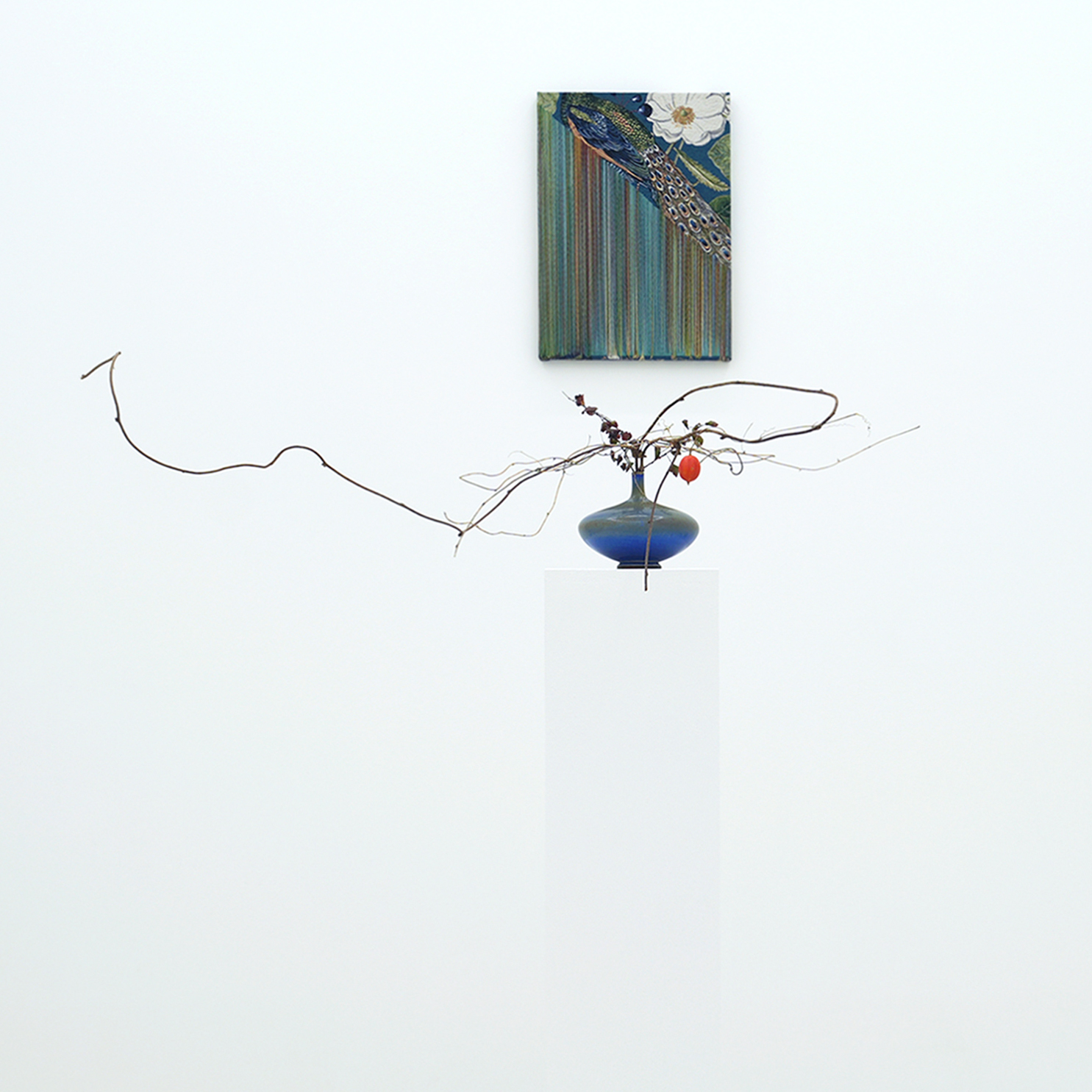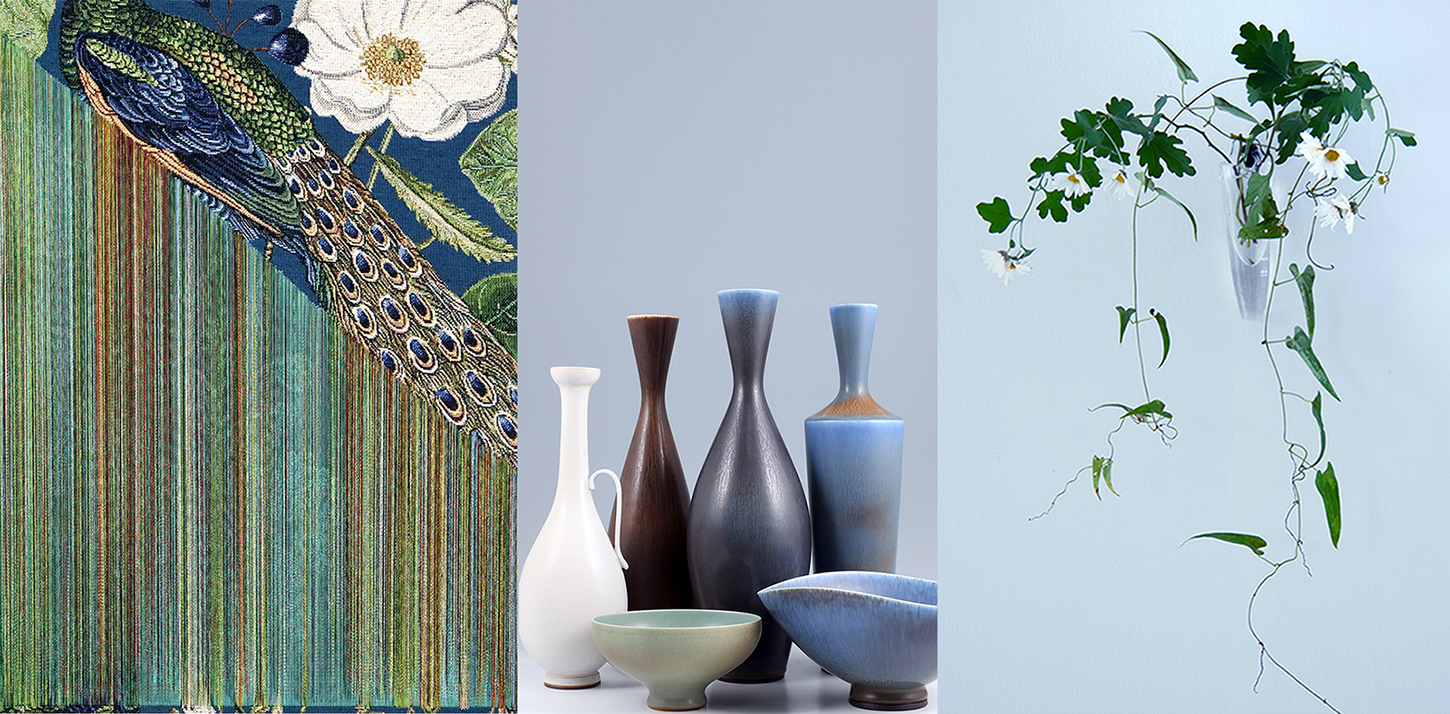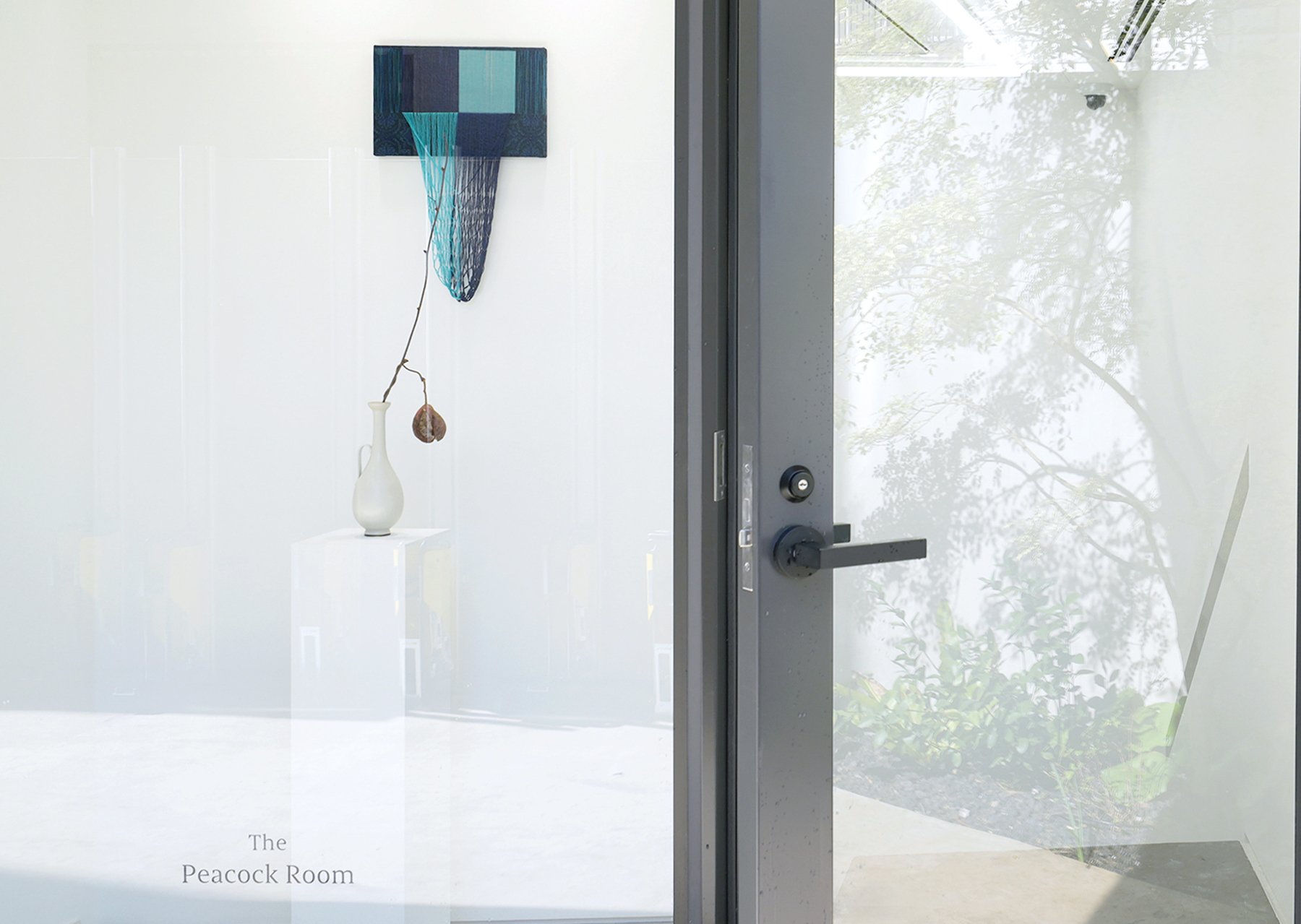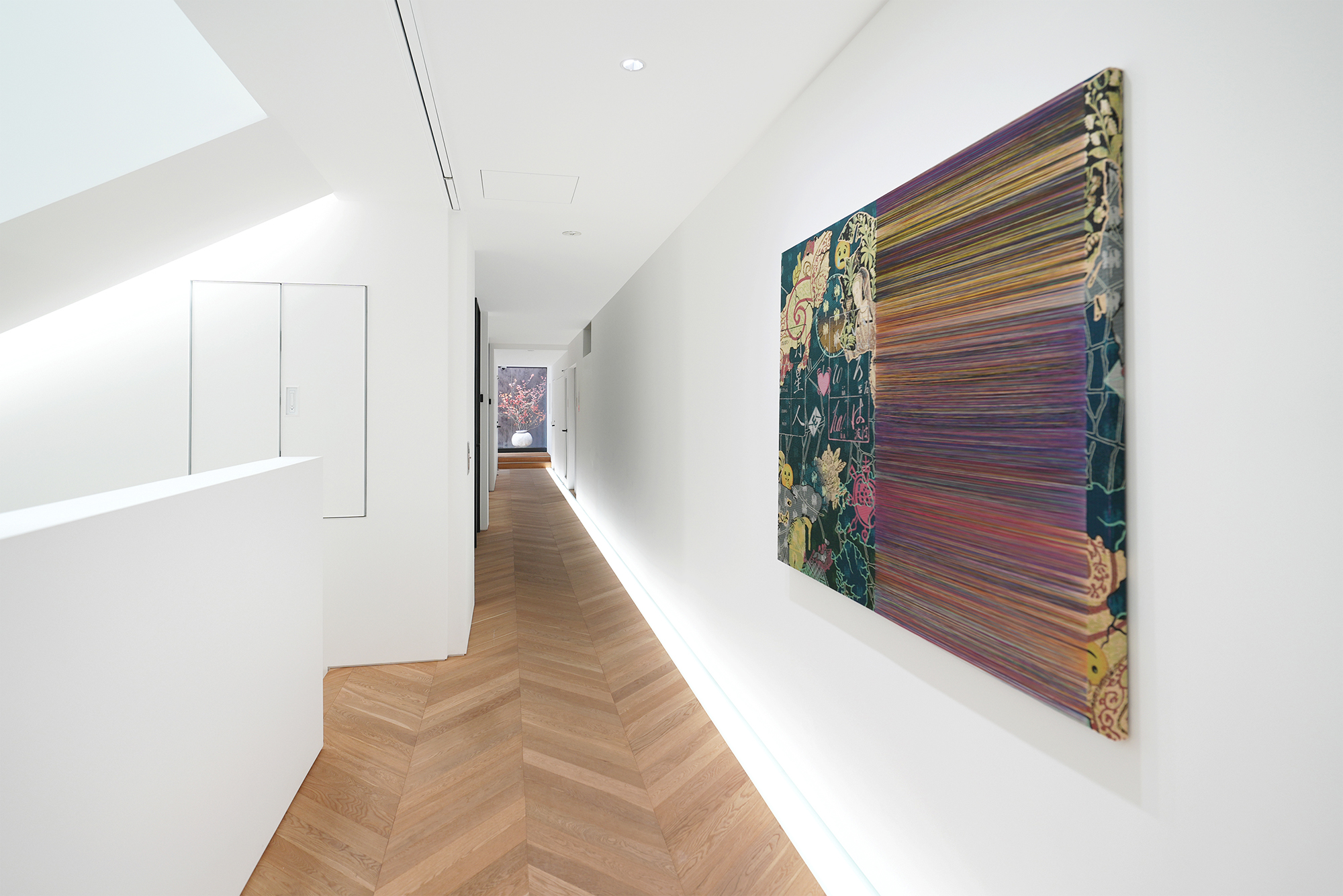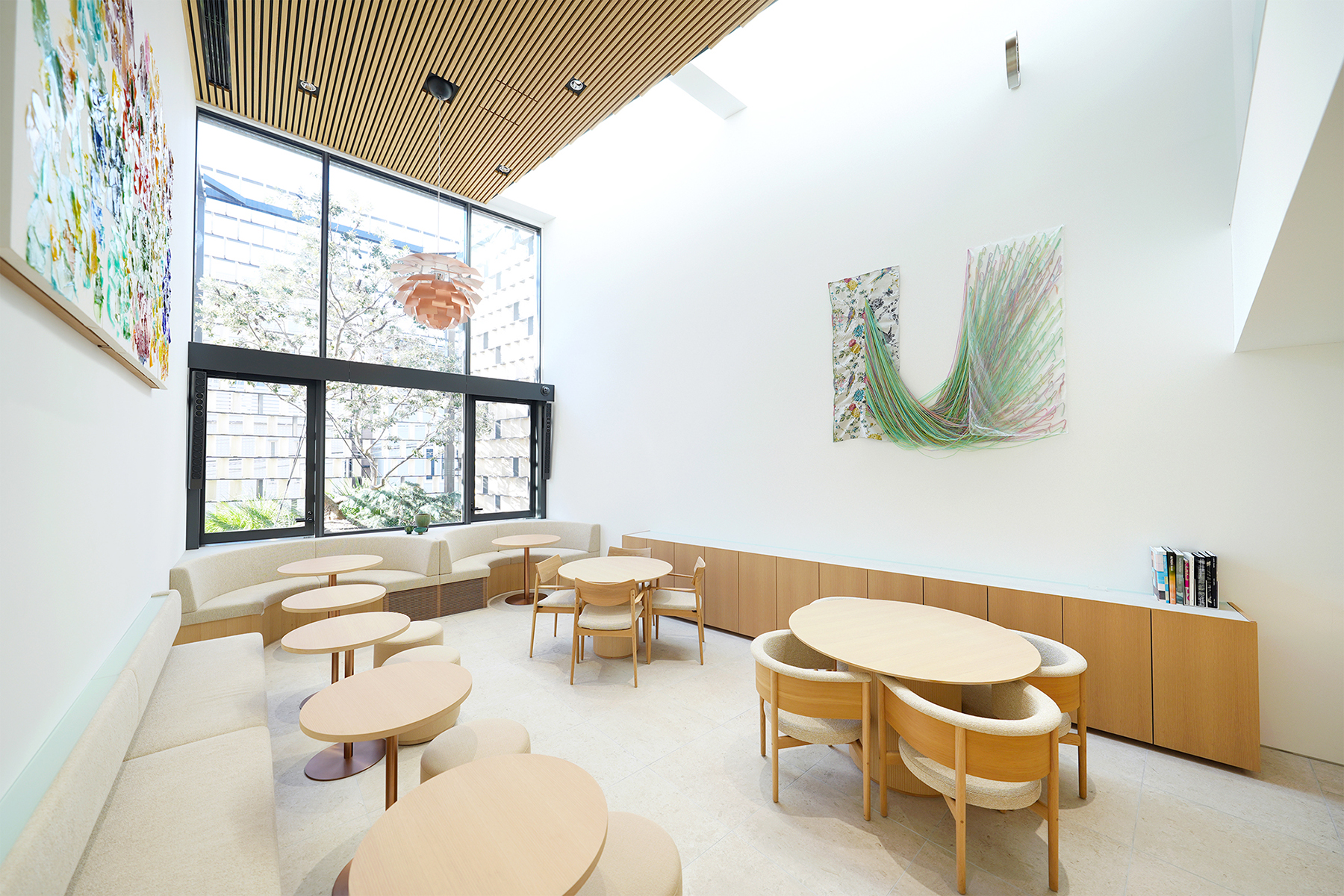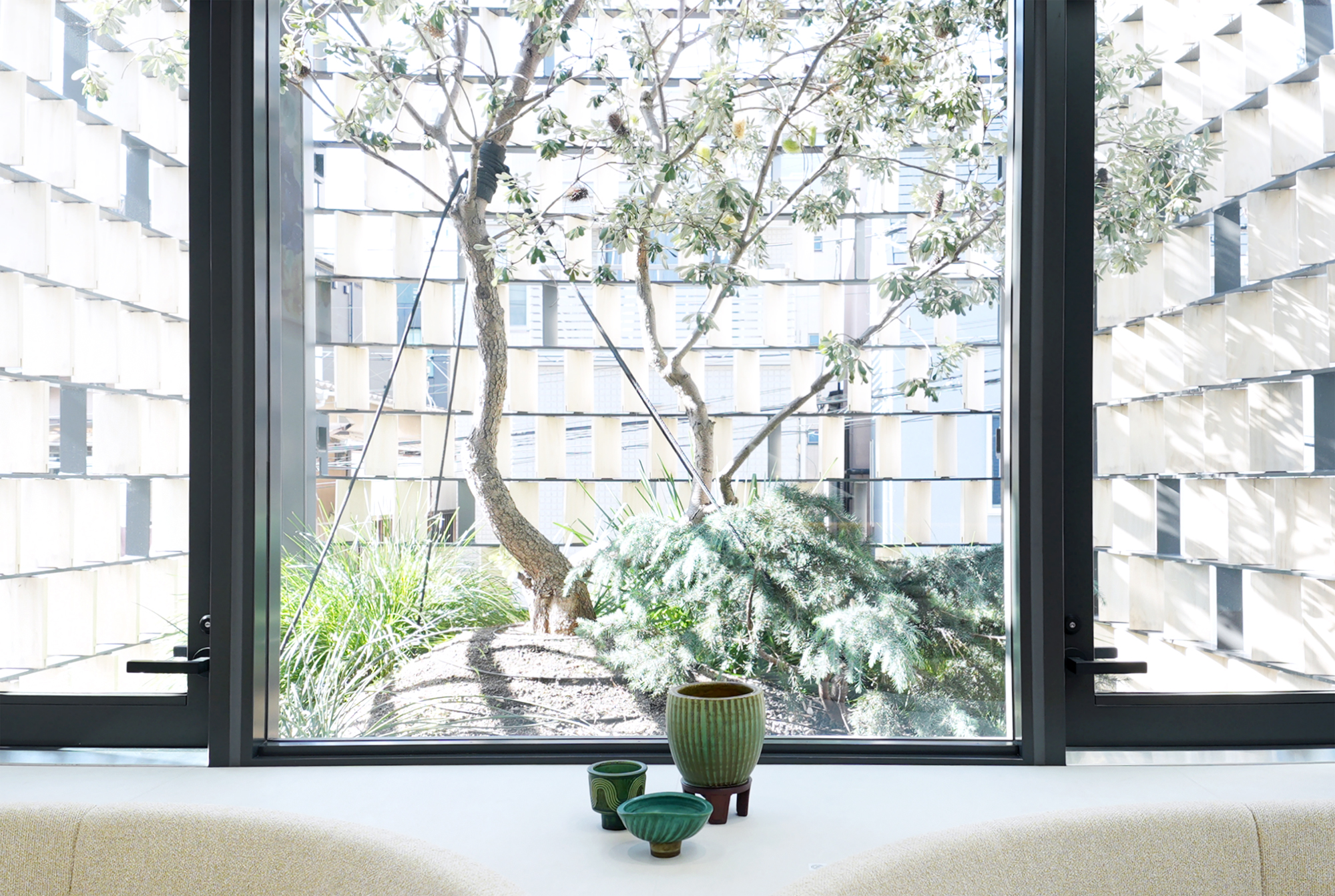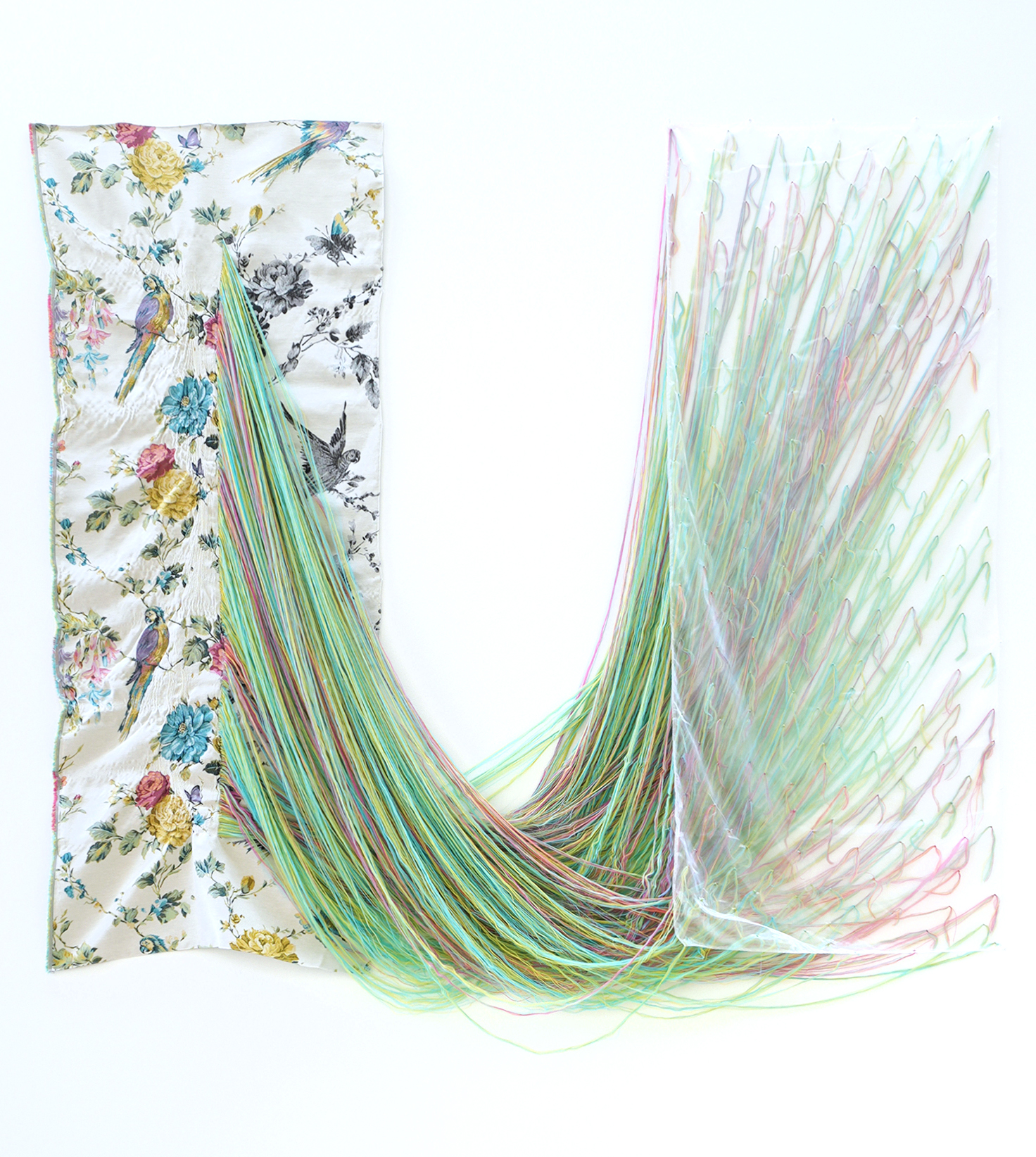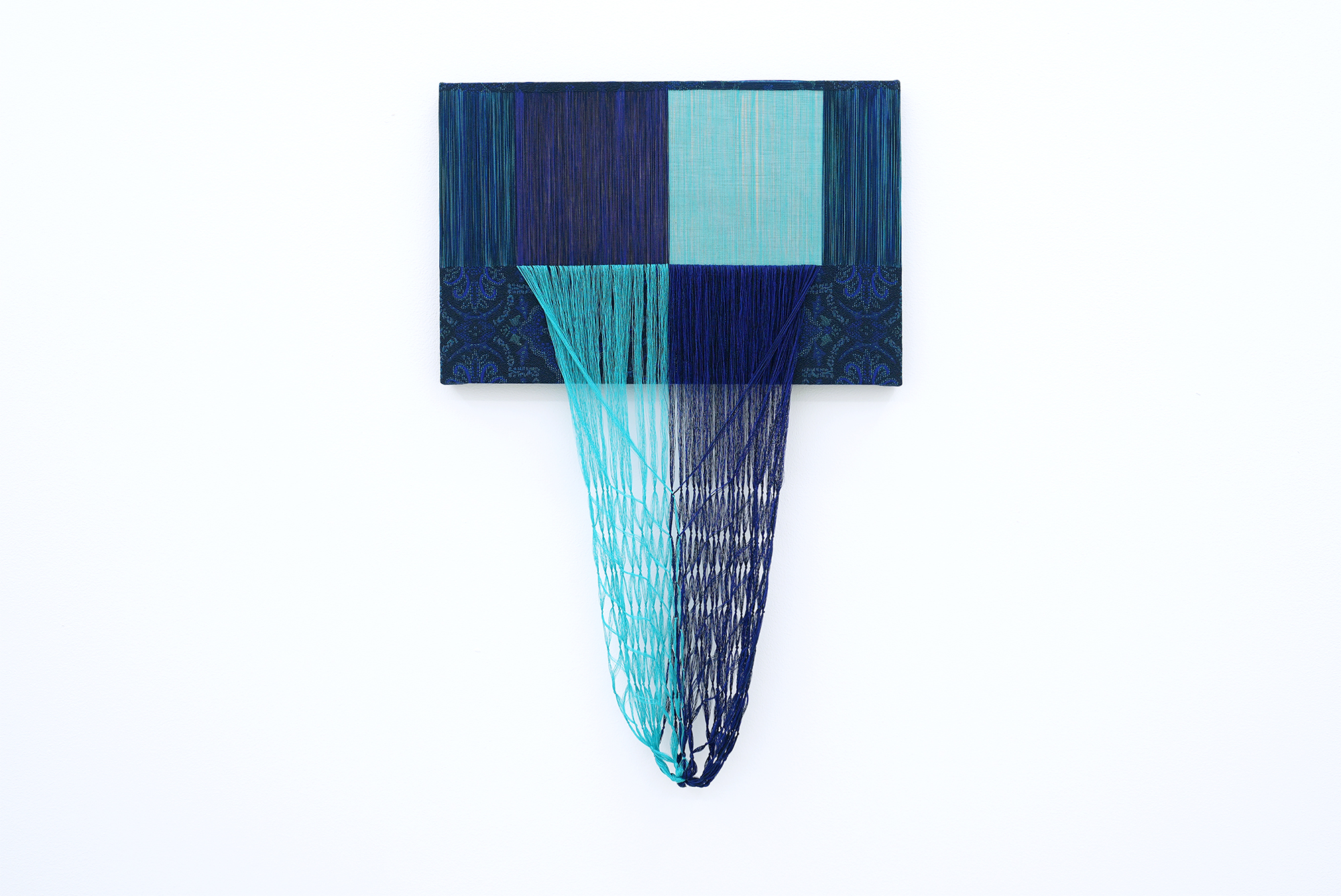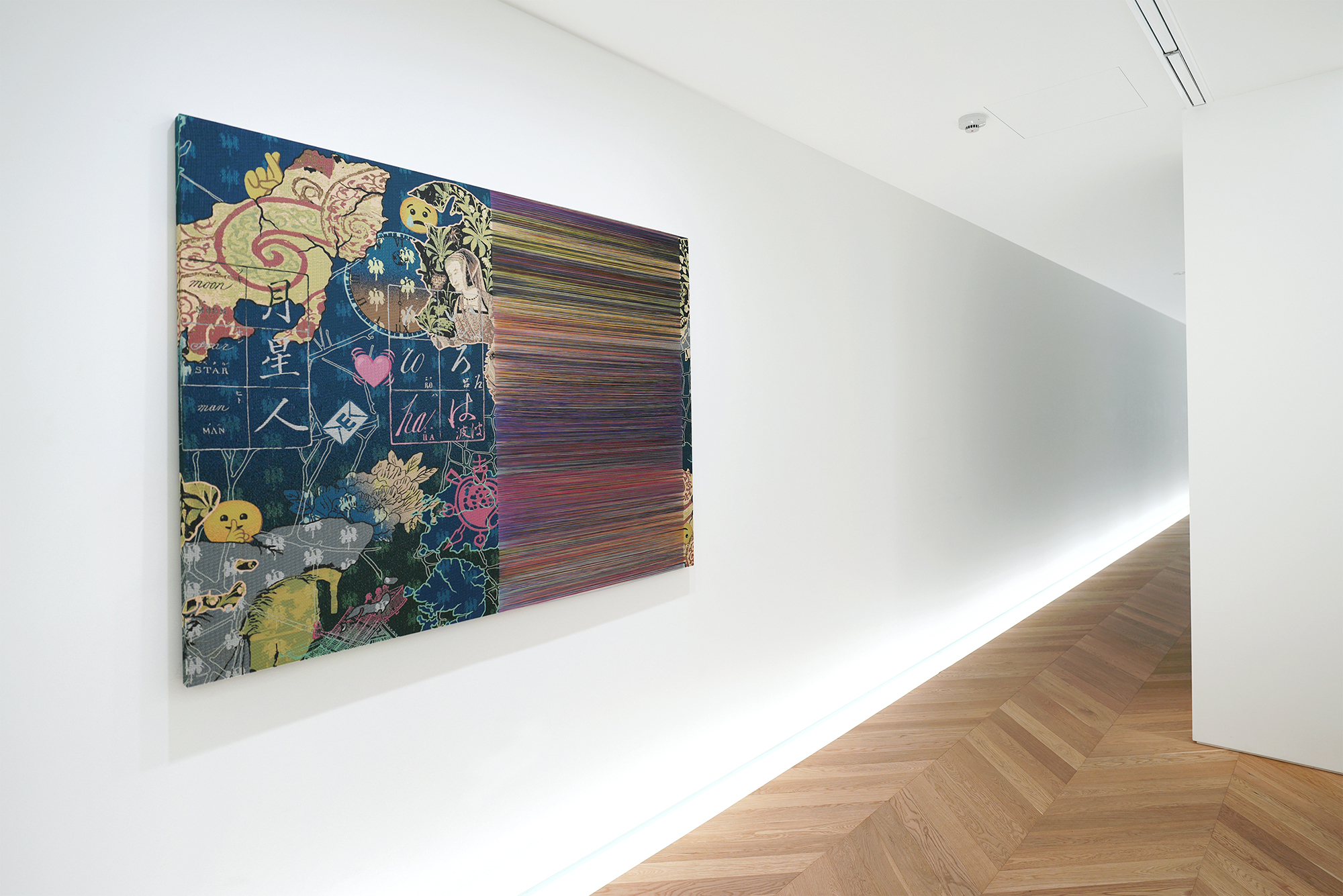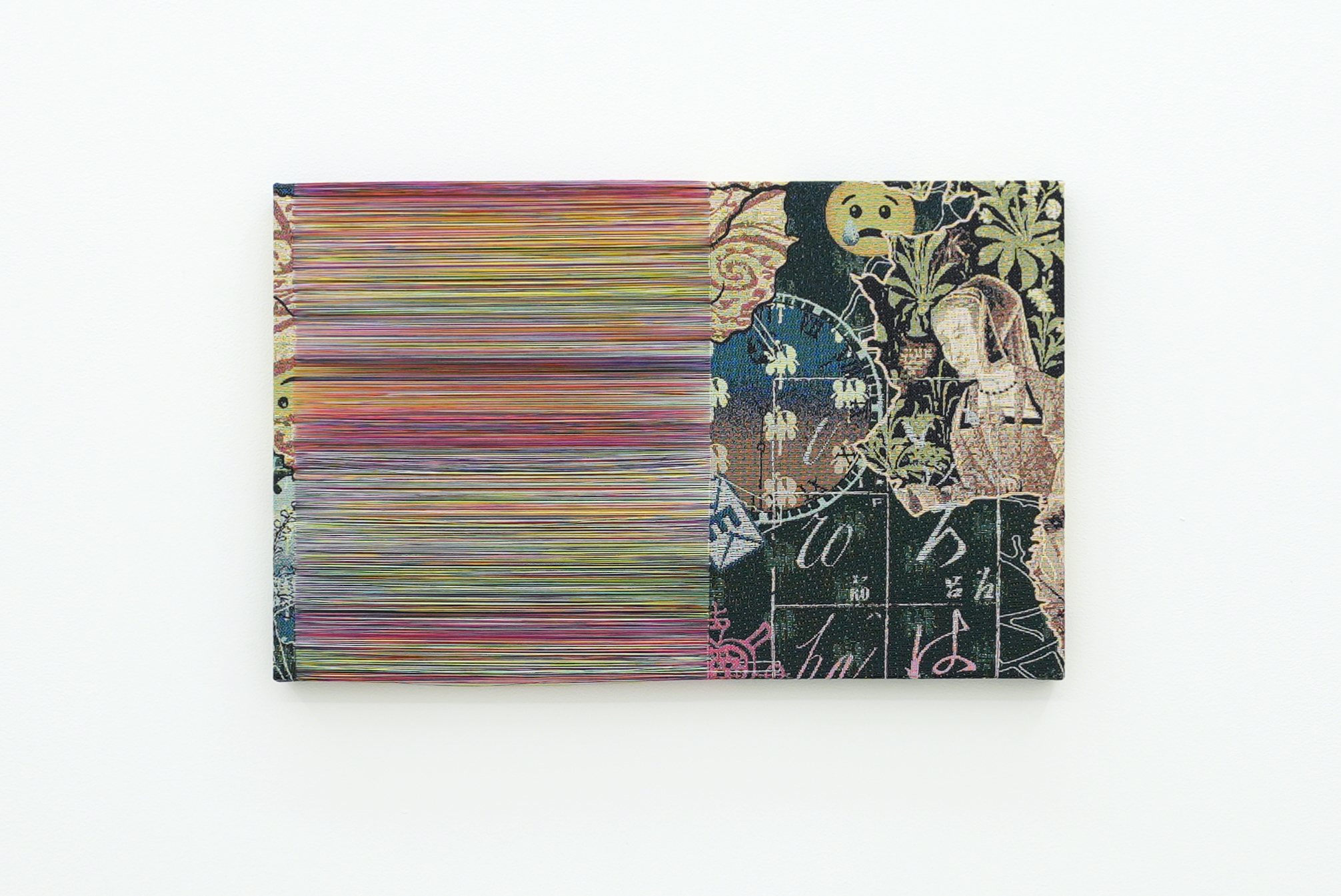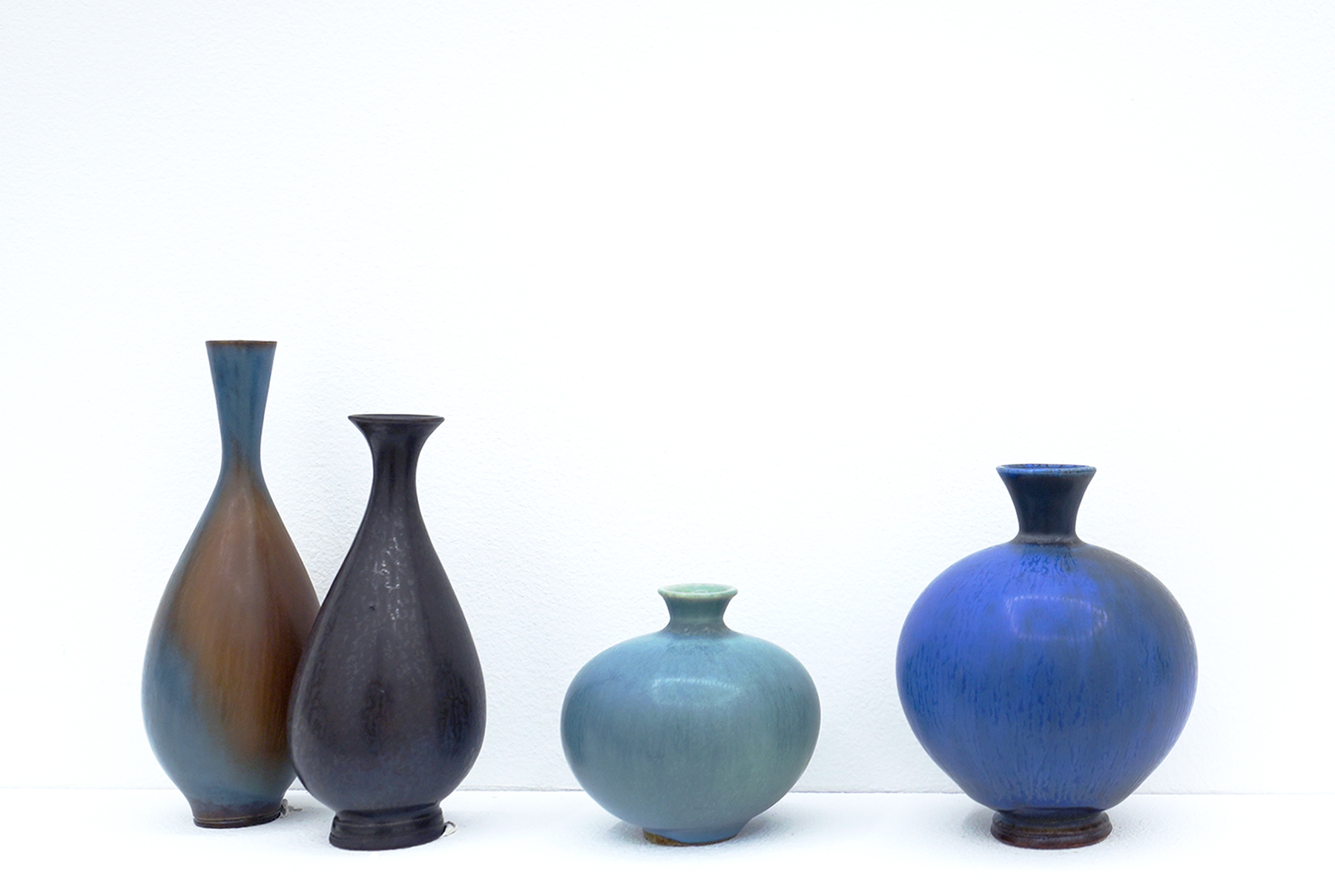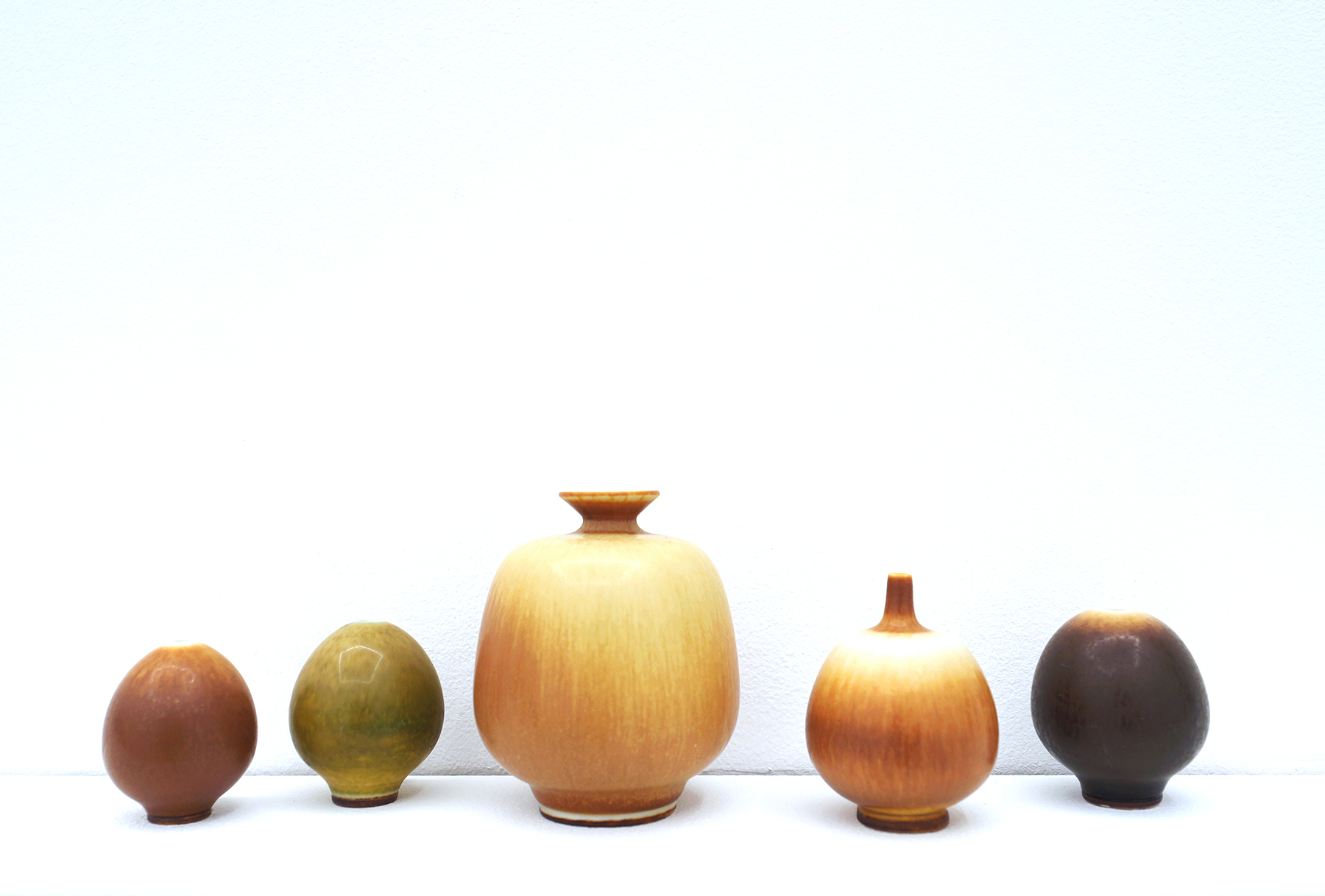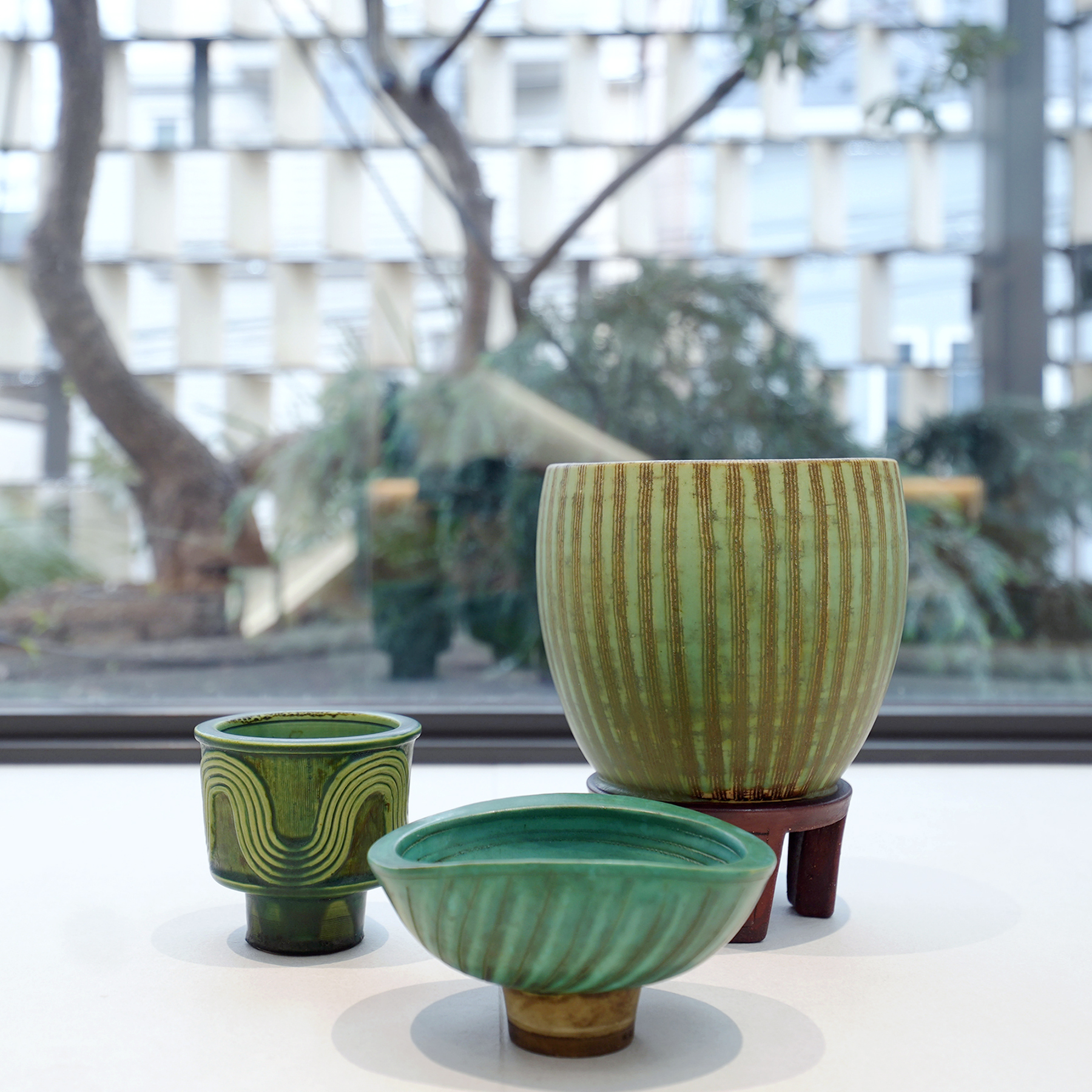Flowery Obscurity (The Night Watch), refers to the masterpiece The Night Watch by 17th-century Dutch master Rembrandt van Rijn. Although the title The Night Watch, which the painting is widely known as today, is, in truth, an eponym of the less known fact that by the time it was titled as such, the painting had been darkened by layers of dirt and varnish, even though the painting did not originally depict a night scene. Nonetheless, the immense painting by the Dutch master reveals the delicate depiction of light and darkness that have enthralled viewers over centuries. Meanwhile, in Tezuka’s Flowery Obscurity (The Night Watch), parts of the image of The Night Watch, where Photoshop (image editing software) mechanically perceived as black, i.e., darkish, have been replaced with the exotic floral patterns that appear on Indian “Sarasa” textiles.
Also, if a viewer follows the floral patterns, the logo of the Dutch East India Company (Verenigde Oost-Indische Compagnie: VOC) can be found. Around the time that The Night Watch was painted, the Asian trade was monopolized by VOC, and Indian textiles manufactured in the Coromandel Coast region, southeastern India, were particularly popular among Europeans. For this reason, VOC has contracted with the regional lords and local textile craftsmen in order to produce a lot of Indian Sarasa. The Indian Sarasa crossed the oceans as popular trading items during the age of the Great Voyages and was loved by Indonesians, the French, the British, the Dutch, and the Japanese.
There is a curious dualism between the old master that had left an indelible mark in the history of art and the dyed textiles that were then excluded from the context of art, even though the latter, in fact, enchanted many people and played an essential part in the world economy at that time. This work, referring to the time in which paintings and dyed fabrics co-existed, albeit in parallel, was also designed by Tezuka and woven at the Textile Museum Lab in Tilburg.
(Text by Sachiko Shoji, Curator, Fukuoka Art Museum, Japan, 2019)

